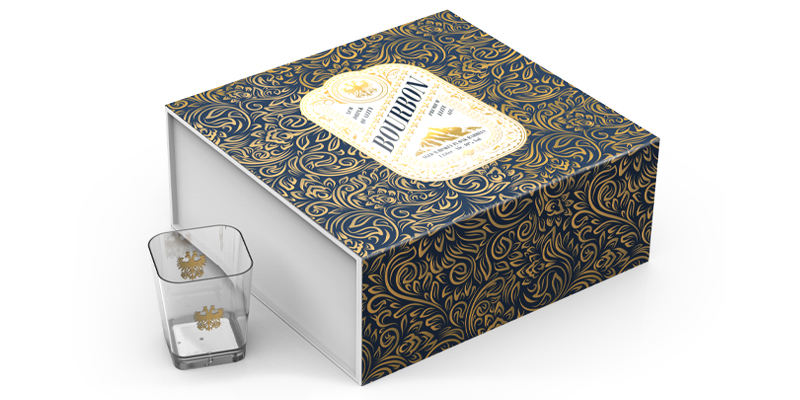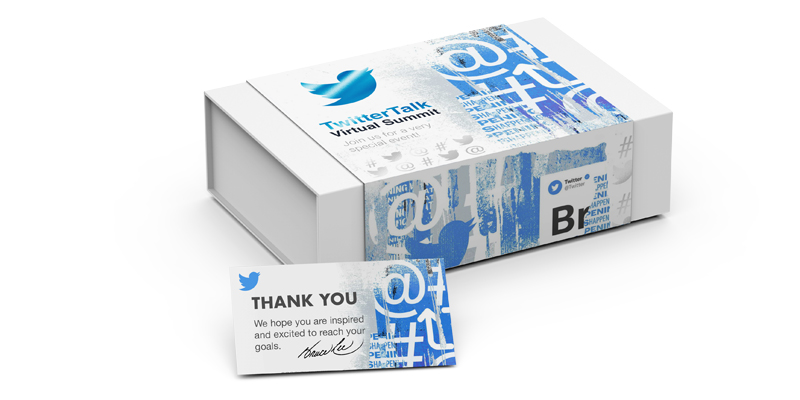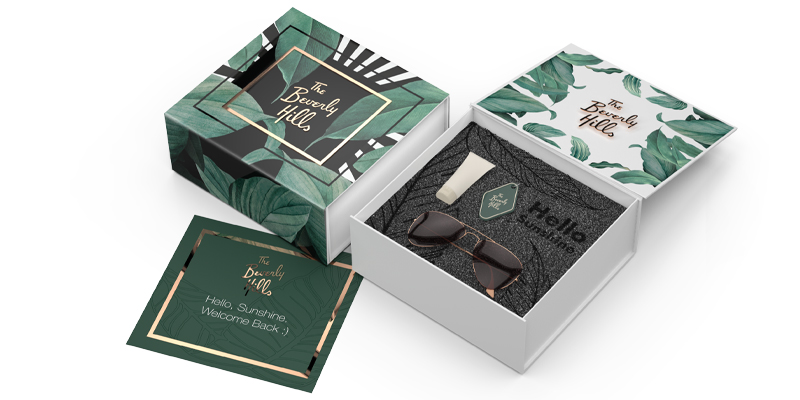
Packaging That Makes A Lasting First Impression.
 – Tina Berres Filipski
– Tina Berres Filipski
Like a beautifully set dining table, a thoughtfully packaged gift lets the recipient savor the experience before ever picking up a fork or lifting the lid. Eye-catching packaging creates anticipation and excitement, and increases the recipient’s delight with the gift itself.
“Packaging is as important and possibly more important than the actual gift,” says Hillary Feder, MAS, president of distributor Hillary’s.
“Packaging is the first impression. It can add so much to the experience that the product is almost secondary. Packaging is one key component to take a promotional, branded product and turn it into a gift or recognition moment with emotion.”

Guy Magee, sales director at distributor Accent Group, agrees. “(Packaging) probably doubles the impact of the gift,” he says. Magee’s team recently worked with supplier PowerStick to package several hundred drones as gifts for top execs at an insurance company. A white SILKEN box with magnetic closure was selected and branded with full-color graphics on the box top and inside lid. The provided drones were then nestled in a custom foam insert.
“The client was asking for the product to be nicely presented,” Magee says. “These are very smartly designed boxes—they really set the product off.” He says he and his team frequently suggest SILKEN boxes because they enhance the perceived value of the product inside. In fact, his company features PowerStick’s SILKEN boxes on its website because they have become such a popular option for many clients’ packaging needs.
He explains the importance of packaging this way, “You’ve got some fairly standard item, but when you put it into the packaging with full-color imprinting, you suddenly change it from something average into a very desirable gift that engenders surprise and delight.” Choosing the right packaging also says a lot about the giver. When done correctly, it can subtly communicate the company’s values, mission and culture. “The packaging you choose can help you convey your brand visually,” says Feder. “Based on the materials used in packaging, they can also convey the company’s values to the recipient.” For example, it makes a statement if you choose a custom box instead of an off-the-shelf option, custom or stock ribbon that coordinates with your client’s brand colors, opt to include an enclosure card with trim or detail that reflects your client’s brand and select packaging materials that are recycled or repurposed, if that’s important to your client.
Feder favors using enclosure cards (also called custom insert cards) in her packaging to share information on how the product was made or the materials used (recycled, for example), and also to offer care instructions. “If you put something in a box with a computerized enclosure message that is pretty commercial, likely it will not elicit an emotional response,” she says. “When a company works to create a balance between the materials used, visuals that fit their brand and messaging that connects to the recipient with an emotional response, you are hitting a different mark. I can’t overstate the importance of messaging.” Magee says high-quality custom-printed boxes, rather than generic boxes, are a guaranteed opportunity for logo brand exposure. “We do a lot of boxes, such as SILKEN, where you can imprint both inside and outside of box,” he says. “It’s got a massive amount of space to add logos and pictures—kind of fill the client’s brain with your logo. Even if you put a sticker on a generic box, it’s not the same. A full-color box looks really professional.”
Magee says high-quality custom-printed boxes, rather than generic boxes, are a guaranteed opportunity for logo brand exposure. “We do a lot of boxes, such as SILKEN, where you can imprint both inside and outside of box,” he says. “It’s got a massive amount of space to add logos and pictures—kind of fill the client’s brain with your logo. Even if you put a sticker on a generic box, it’s not the same. A full-color box looks really professional.”
One more factor to consider is that when a product is packaged in a premium box, the recipient is likely to keep it for other uses, thereby extending the visibility of the company brand and messaging even more.
The coronavirus pandemic over the past two-and-a-half years created an environment in which more companies have chosen to give employee and client gifts, and to send the gifts directly to the recipients’ homes. Thus, the demand for attractive packaging has increased and distributors must become more familiar with packaging options and trends than ever before.
Feder says some of the packaging trends she’s seen include these:
- Packaging that takes the environment into account. Consider that less material can make a bigger impact.
- Packaging that’s eye-catching. For example, a full-color shipping box or a large brand-sensitive sticker that covers the top of the box.
- White shipping boxes in place of Kraft shipping boxes.
- Depending on the product inside, there may not be a need for an interior gift box. Instead, a single box is used for housing the product and shipping, and the interior of the box is filled with tissue paper and finished with ribbon.
In addition to the box selected, the unboxing experience can be further enhanced by adding a custom laser-etched foam insert to cradle the product and a full-color box sleeve or bellyband with luxury embellishments such as metallic foil and spot gloss for stunning impact.
When considering packaging options, Feder offers three important factors to remember:
- Packaging (and the materials/labor needed) will add to the finished cost. Do you need to alter the cost of the product to allow for packaging or is the budget such that it can be added on top?
- Who will handle the packaging? Does the supplier offer fulfillment? If so, will their fulfillment style reflect the brand you want for your company as you present the service to your client? Do you need an outside fulfillment house (and will their work reflect your brand and your client’s vision)?
- Do you have capacity to take this on? Is there time to add packaging? Packaging increases the production schedule and extends delivery time. Be sure to build that into your timeline.
Lastly, the product and packaging need to complement each other. “High-end packaging on a product that is not worthy of it, is a disconnect,” says Feder.
Magee adds, “Packaging well done enhances the perceived value of the product and adds impact for the recipient. It demands attention rather than being another ‘me too.’”
PowerStick.com is the only company designing and manufacturing its own portable chargers in North America. See the full product line of personal tech products and premium packaging choices at powerstick.com.







